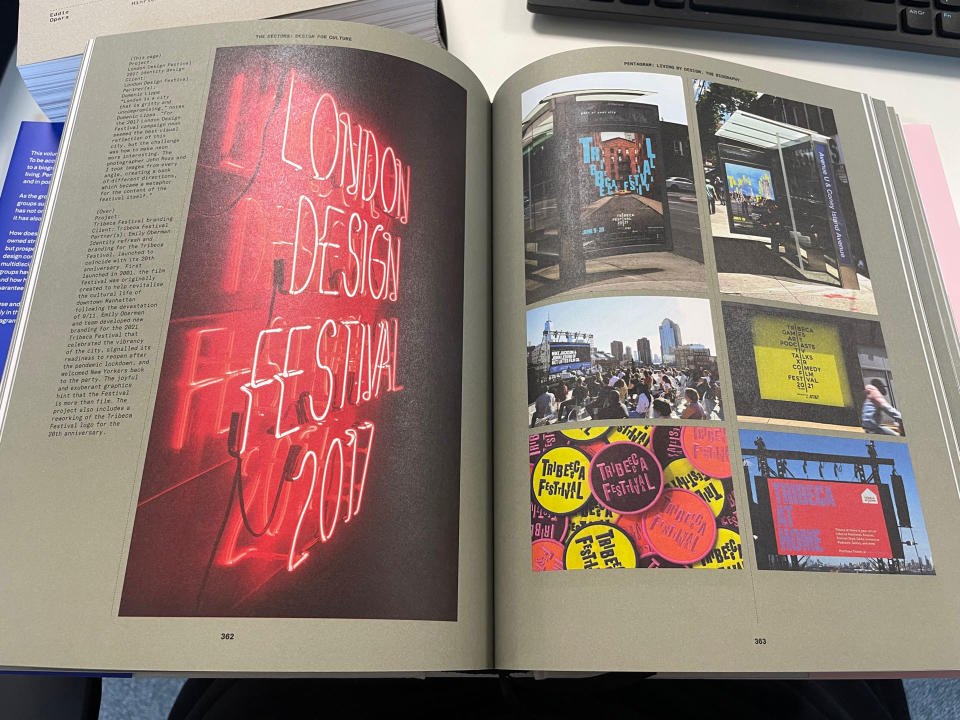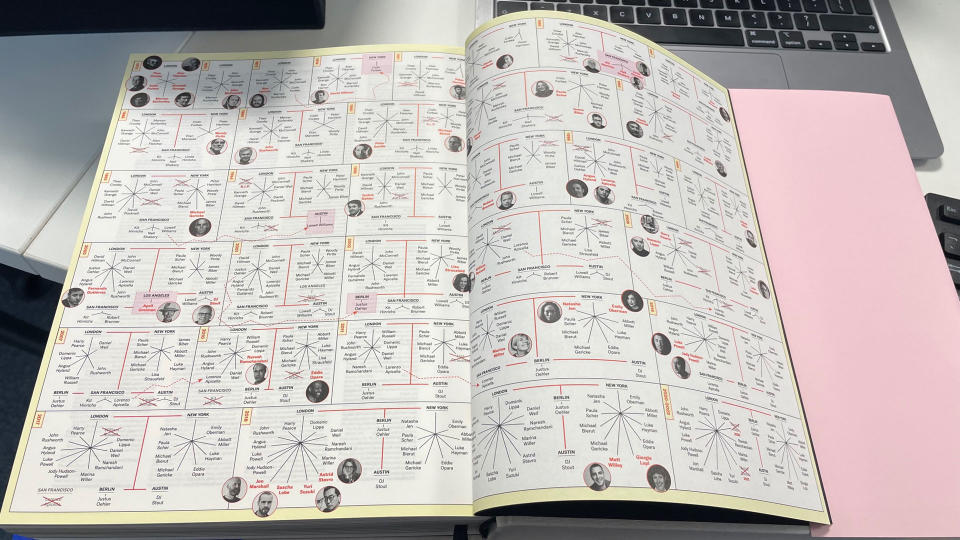Pentagram: Living by Design review: hefty tome on a world-famous design firm

Pentagram is probably the world's most famous design agency. As one of its partners, Michael Bierut, once put it, "If you've heard of a design firm, you've probably heard of Pentagram". To celebrate 50 years of the agency, a new tome written by Adrian Shaughnessy digs deep into its past and present, and the result is a rather special volume aimed, it seems, at super-fans.
The book has two volumes, The Biography, which runs at 656 pages and covers the agency as a whole, outlining its achievements, approach, business model and even a "miscellany of artefacts" stored in the London and New York archives.
The second book is The Directory, which has 736 pages and includes profiles of Pentagram partners past and present, along with images and commentary of their work.
The graphic design books were designed by Tony Brook and the Spin team and the limited-edition run of 1,000 comes in various colours (I've got violet and slate).

I certainly wouldn't recommend the books to anyone who doesn't want to fully geek out on Pentagram. But the sheer body of work in them does provide plenty of inspiration, and learning about the stories behind the partners, including their backgrounds and how they started out, makes for some interesting reading.
I have to admit that for a couple of weeks I've been mostly using the books to prop up my laptop – they're particularly weighty and so excellent for this task. But once I started looking through them, I got addicted. There's so much there and you can either dip in and read bits at a time, or immerse yourself in a Pentagram world by poring over the pages.

There are 50 partners profiled in The Directory, including Alan Fletcher, Paula Scher, Peter Saville, Natasha Jen and Kit Hinrichs. Each directory entry includes background on the designer, as well as quotes from them, and then several pages of their work. Captions are sparse and just outline the name of the project, the client, scope and sector. Some people may find they want to know a little more about each project, but presumably, there was simply no room to go into that level of detail for 50 designers.
For anyone craving those longer captions, The Biography delivers. This book is divided into sections, there's Living by Design – an essay tracking the firm's history right up to the present day. Next up is The Sectors, which is then divided further into Branding, Editorial Design, Design for Culture and Three-dimensional Design, with Pentagram's work slotting neatly into these categories.

The next section is on Pentagram partners: in their own words, and consists of writing, interviews, commentaries and talks from Pentagram partners such as Eddie Opara, Marina Willer and Naresh Ramchandani.
There's also the Pentagram Miscellany, which outlines the group's archive material. This is all fascinating stuff, and you could easily lose a few hours to each of these sections. The final page consists of the Pentagram Partners Family Tree, mapped out by Paula Scher, which is another fun thing to pore over.

Overall, this is an informative and enjoyable book to read. It's weighty and therefore a little hard to handle, and is not exactly what I'd call a 'light' read. And it's certainly not a practical guide to design, so if you want something with 'how to' steps, perhaps try one of our best drawing books instead.
But if you want an in-depth look at some of the best work created by some of the best designers in the past 50 years, this book is for you. (And if all else fails, it makes a lovely laptop stand.)
